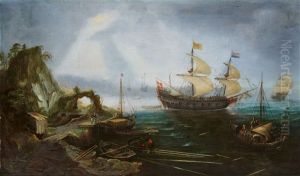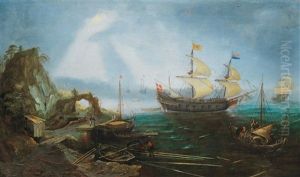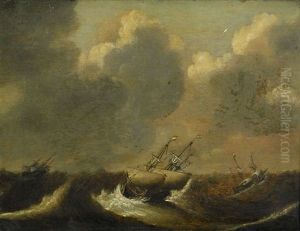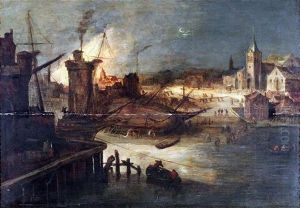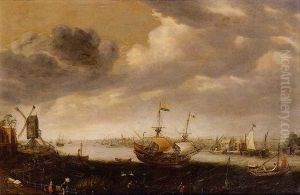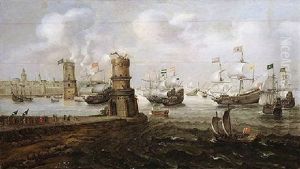Cornelis Claesz van Wieringen Paintings
Cornelis Claesz van Wieringen was a notable Dutch Golden Age painter and draughtsman, primarily recognized for his marine paintings. Born in Haarlem in the Netherlands, around 1576 or 1577, van Wieringen became an influential figure in Dutch art, particularly within the genre of marine landscapes. His early life and training are not well-documented, but it is known that he became a member of the Haarlem Guild of St. Luke in 1597, marking the beginning of his professional career as an artist.
Van Wieringen's work is characterized by dynamic seascapes, often depicting naval battles, storms, and shipwrecks, showcasing his exceptional ability to capture the movement of water and the drama of the sea. His paintings are noted for their detailed ships and lively compositions, reflecting the Dutch Republic's maritime prowess and the significance of naval warfare during this period.
Among his most famous works is a large painting commemorating the Battle of Gibraltar in 1607, which was commissioned by the States-General of the Netherlands. This piece is particularly celebrated for its intricate depiction of the battle and its historical importance in Dutch naval history. Van Wieringen's contribution to the genre of marine painting was significant, influencing subsequent generations of Dutch marine painters.
Throughout his career, van Wieringen also served in various administrative roles within the Haarlem Guild of St. Luke, further cementing his status within the artistic community of his time. His legacy includes not only his contributions to the genre of marine painting but also his role in the artistic and cultural life of Haarlem.
Cornelis Claesz van Wieringen passed away in Haarlem in 1633. His works continue to be appreciated for their historical value and artistic excellence, embodying the spirit and achievements of the Dutch Golden Age of painting.
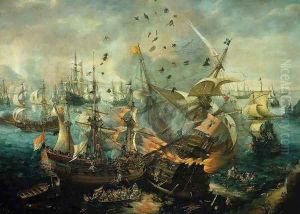
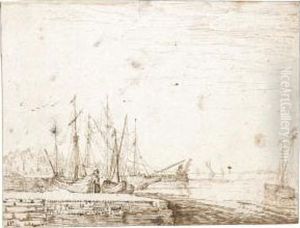
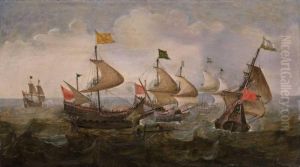
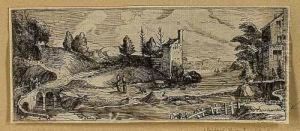
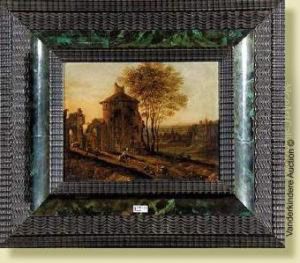
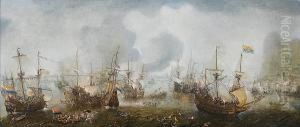
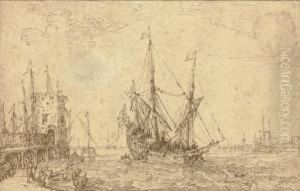
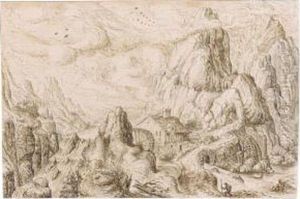
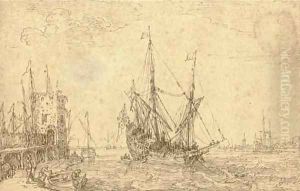
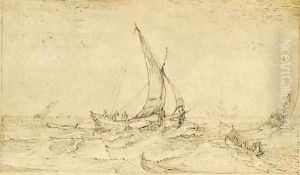
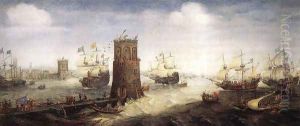
![Explosion of the Spanish Flagship in the Battle of Gibraltar, 1607 [detail #1]](https://www.niceartgallery.com/imgs/311316/s/cornelis-claesz-van-wieringen-explosion-of-the-spanish-flagship-in-the-battle-of-gibraltar-1607-detail-1-ef657acd.jpg)
